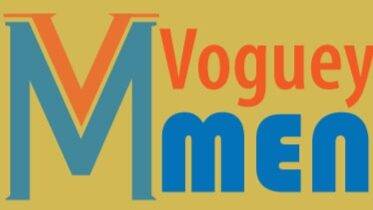Germany—a land of majestic castles, zoos, and a rich legacy of poets and philosophers—also boasts a proud and fascinating fashion heritage. In this sartorial journey of a country that is also the birthplace of the brands Hugo Boss and Adidas, we’ll explore some of the most iconic traditional garments and accessories that define German fashion. From headwear to footwear, and everything in between, we’ll uncover fashion elements unique to this great nation, along with Germany’s broader contributions to the world of fashion.
You’ll find that German fashion is so much more than just lederhosen and dirndls. Get ready for a voyage of discovery—filled with surprises! Let’s dive in.
Iconic German garments:
Let’s set the ball rolling by introducing you you iconic German garbs, the sartorial pieces that define traditional German fashion.
1. Lederhosen

Lederhosen are short or knee-length leather breeches traditionally worn in Bavaria, Austria, and Switzerland. Made from tanned deerskin or cowhide, they feature intricate embroidery, suspenders, and side pockets. Originally worn by hunters, laborers, and farmers, they are now a symbol of Bavarian pride at events like Oktoberfest. Their durability and water resistance make them practical for outdoor use. Modern versions are worn with wool socks, rustic shirts, and Haferl shoes, blending tradition with contemporary fashion.
Here is where you can find leather jacket outfit ideas for men,
2. Dirndl

The Dirndl is a traditional Bavarian and Austrian dress for women, consisting of a bodice, blouse, full skirt, and apron. Historically a maid’s outfit, it evolved into a festive and elegant ensemble. Dirndls are made of cotton, silk, or velvet, with intricate embroidery and lace trims. The apron knot position indicates a woman’s relationship status: right (married), left (single), center (virgin), back (widow or waitress). It remains a popular Oktoberfest and regional cultural attire.
image source: Pinterest
3. Dirndl Blouse Crop Top.
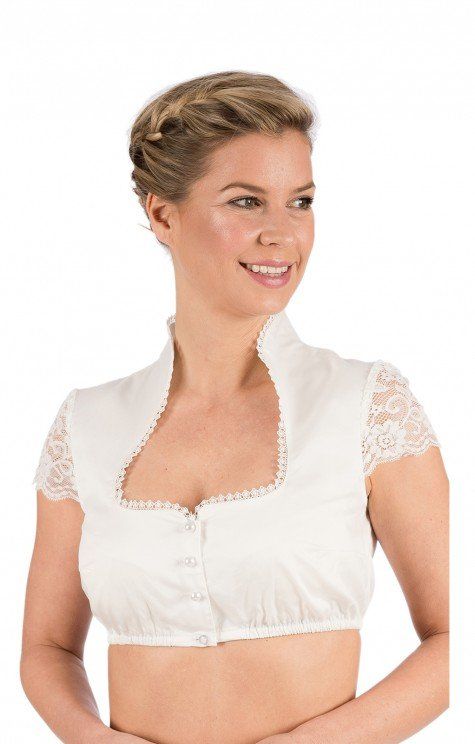
A modern adaptation of the traditional Dirndl blouse, the Dirndl blouse crop top is a short, lace-trimmed blouse with puff sleeves and a low neckline. Typically made of cotton or lace, it is designed to be worn under a Dirndl bodice but has become a trendy standalone piece. Fashion-forward women pair it with jeans, skirts, or high-waisted shorts, blending Bavarian tradition with modern casual wear, especially during summer festivals. image source
4. Janker (Loden Jacket)
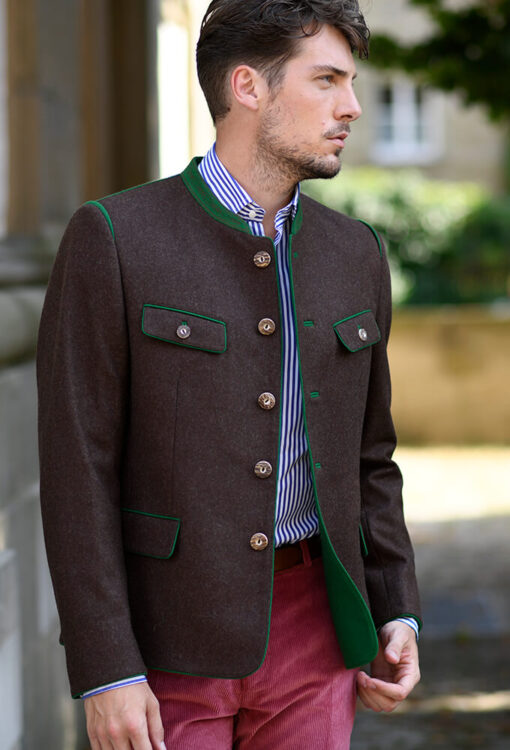
A Janker is a traditional Bavarian wool jacket, crafted from Loden (tightly woven, weather-resistant wool fabric). It has a simple, straight-cut design, often featuring horn buttons, contrast piping, and a stand-up collar. Worn by hunters, farmers, and noblemen, the Janker provides warmth and durability. It is commonly paired with Lederhosen or Trachten trousers and remains a refined choice for festive occasions and formal gatherings. Its classic and timeless design makes it a versatile heritage fashion item.
5. Bundhosen
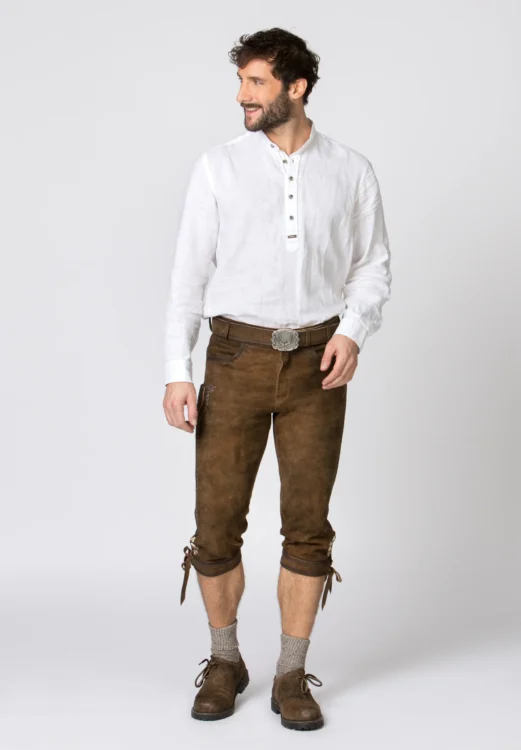
Bundhosen are knee-length leather trousers, similar to Lederhosen but slightly longer. Made from deerskin or cowhide, they are durable and embroidered with regional patterns. Traditionally worn by hunters, laborers, and outdoorsmen, they provide protection and comfort for activities like hiking and horseback riding. Today, Bundhosen are worn at cultural festivals and paired with woolen knee-high socks, checkered shirts, and Haferl shoes. Their rustic yet sophisticated style makes them a traditional menswear staple in German-speaking regions.
6. German Army Parka

The Bundeswehr parka, developed for the German military, is a durable, olive-green parka made from heavy cotton or polyester-blend fabric. It features a concealed zipper, snap buttons, large cargo pockets, and a warm fleece or wool liner. Designed for cold-weather protection, it became a streetwear icon in the 1980s-90s, adopted by punk, grunge, and military fashion enthusiasts. Its rugged yet stylish appeal makes it a sought-after vintage and utilitarian piece, still popular in outdoor and urban fashion today.
7. Loden Cape
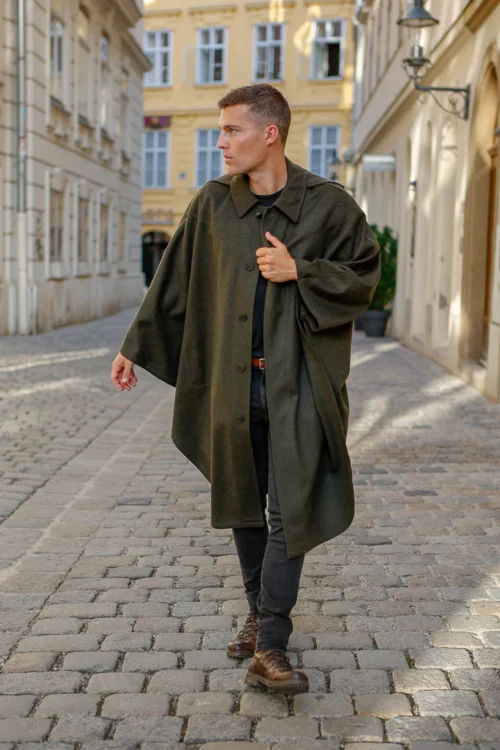
A Loden cape is a flowing, woolen outer garment made from Loden fabric, a thick, water-resistant wool traditionally used in Austrian and Bavarian attire. It features a loose, draped silhouette, often with a high collar or hood, providing warmth and weather protection. Historically worn by hunters and noblemen, it became a luxurious winter wear piece. Today, the Loden cape is appreciated for its elegance, practicality, and heritage appeal, often styled with formal or casual outfits.
Fashion accessories and footwear of German origin:
Traditional German fashion accessories deserve to be mentioned in this article, they do not ignore these small add-ons with powerful stylish impact. Here’s a rundown of fashion accessories that define German fashion.
Bollenhut
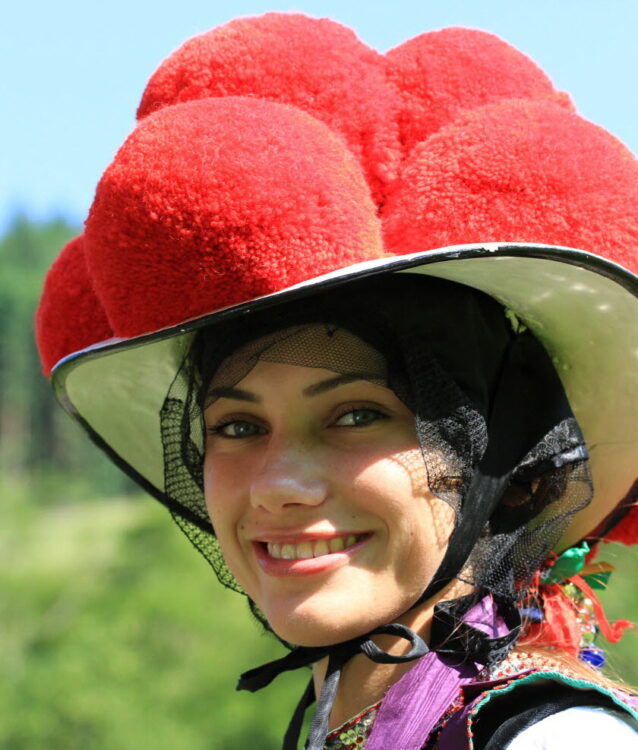
A traditional Black Forest hat, the Bollenhut is a straw or felt hat adorned with large red or black wool pom-poms. Worn by unmarried women (red) and married women (black), it symbolizes regional identity. Its wide brim and structured shape make it visually striking, often paired with Black Forest Tracht in festivals and celebrations.
Tyrolean hat:
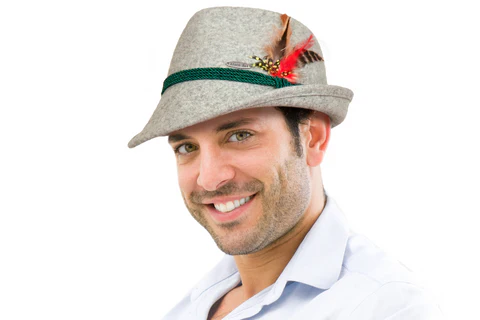
The Tyrolean hat, a staple of Alpine tradition, features a small brim and a high, tapered crown, often made of felt or wool for durability and warmth. It is commonly adorned with cords, feathers, or pins, symbolizing status or regional pride. Worn at Oktoberfest and folk events, it’s a signature Bavarian accessory, adding flair to traditional Tracht attire while serving as both a cultural emblem and functional headwear.
Oktoberfest farmer hat:
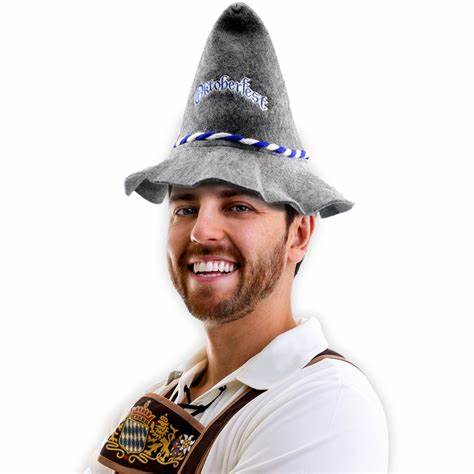
The Oktoberfest Farmer Hat is a fun and distinctive accessory often worn at Bavarian celebrations. It features a tall, conical top, typically made of felt or polyester, giving it a playful, exaggerated look. Some versions include braided ropes, haystack cutouts, or beer stein decorations, adding to its festive appeal. This hat is designed to embody the rustic charm of traditional German farmers while serving as a lighthearted costume piece for Oktoberfest parties.
Bergmütze (Ski Cap)
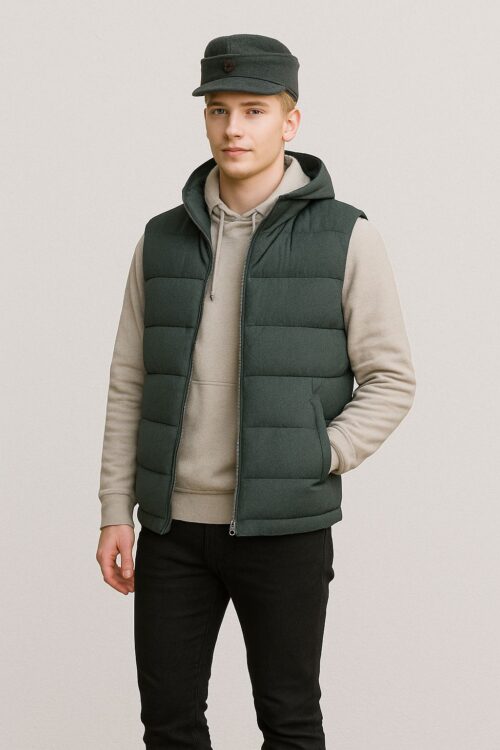
The Bergmütze, or ski cap, is a soft wool cap with a short brim, originally worn by German mountain troops for cold-weather protection. Featuring a fold-down ear flap, it provides warmth and practicality. Still popular among hikers, skiers, and outdoor enthusiasts, its rugged aesthetic blends military heritage with modern winter fashion.
Gamsbart
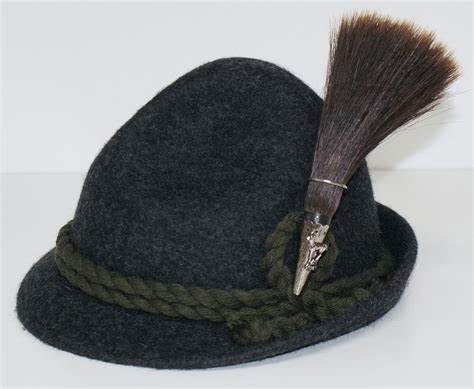
The Gamsbart is a decorative tuft of chamois or badger hair, worn on Alpine hats like the Miesbacher. Mounted on metal or wooden bases, it signifies hunting prowess and regional pride. Traditionally worn by hunters and Bavarian men at festivals, it remains a symbol of Alpine tradition, often paired with Lederhosen attire.
Haferl Shoes
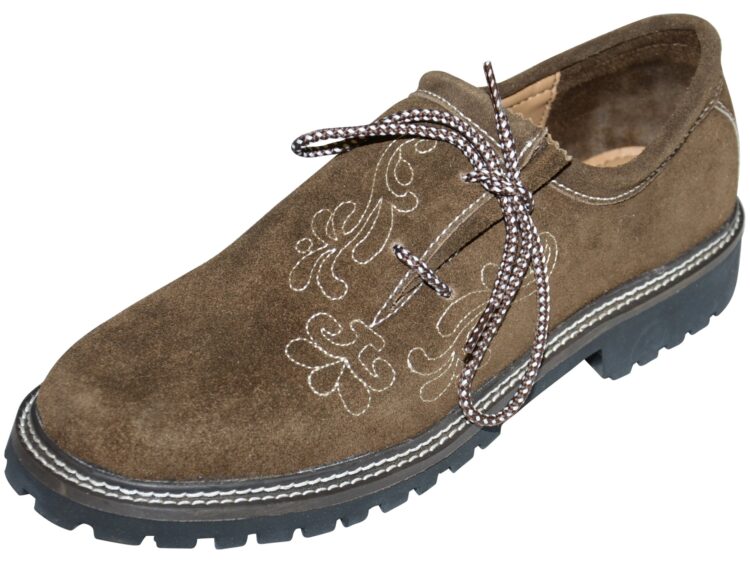
Haferl shoes are sturdy leather shoes with side lacing, thick soles, and reinforced stitching, originally designed for Alpine workers and hunters. Made from cowhide or suede, they provide durability, stability, and comfort. Traditionally worn with Lederhosen, they are now fashionable outdoor and casual shoes, appreciated for their rustic yet refined look.
German Army Trainers (GATs)
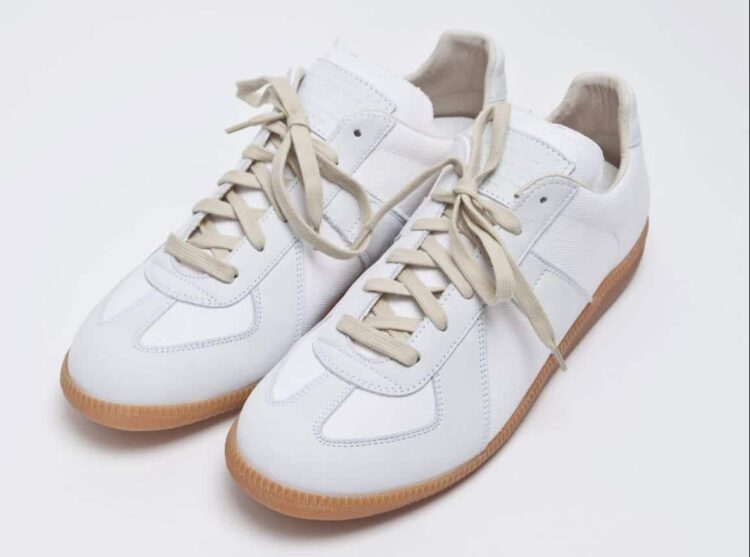
Developed for the Bundeswehr in the 1970s, German Army Trainers (GATs) are low-profile leather sneakers with suede toe caps and gum soles. Made from high-quality leather, they offer durability and comfort. Once standard-issue military footwear, they became streetwear icons, embraced by fashion houses and sneaker enthusiasts for their minimalist, functional design.
German Para boots:
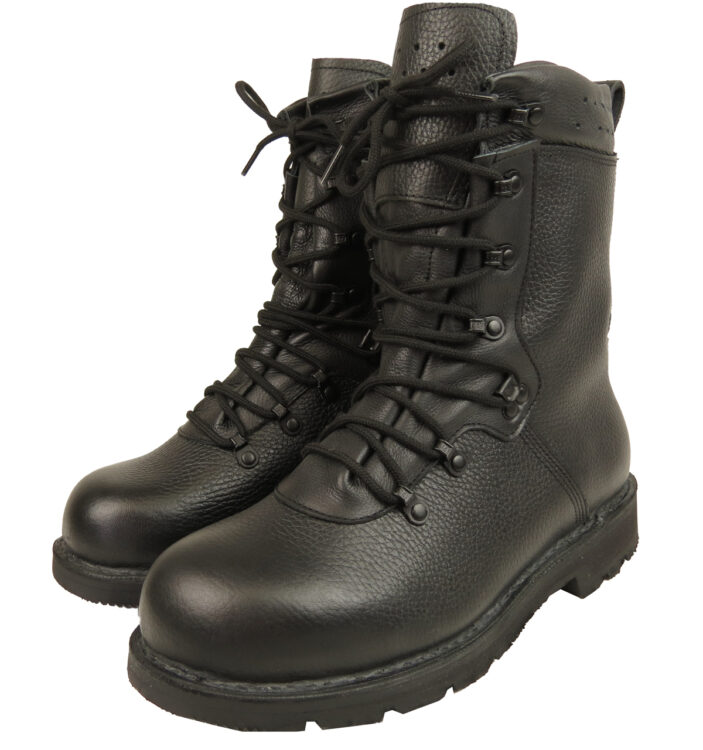
German para boots are durable, high-quality combat footwear originally designed for paratroopers in the German military. Built for protection and versatility, they feature reinforced leather construction, moulded soles for grip, and ankle support for long-term wear. Models like KS2005 and classic German Army Paratrooper Boots are widely used in military, hiking, and outdoor activities. Known for their rugged durability and comfort, they remain a staple for those seeking reliable, heavy-duty boots with a history of excellence in craftsmanship.
Wooden Bowtie
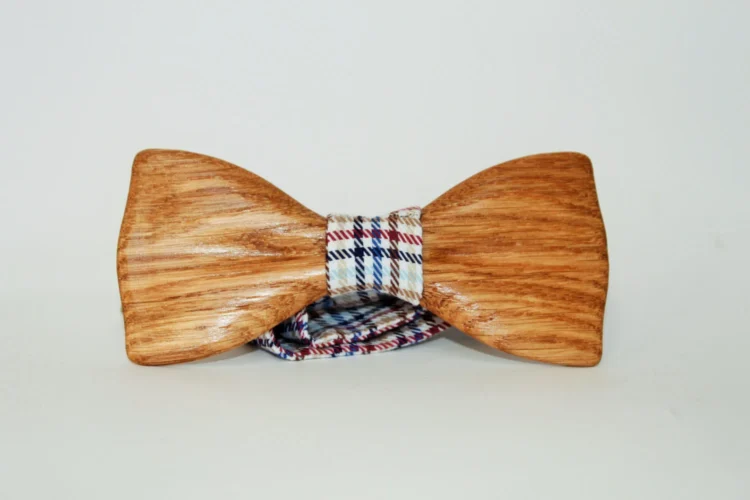
A handcrafted bowtie made of wood, often carved from oak, walnut, or beech, featuring intricate designs and a fabric centerpiece. Lightweight yet stylish, it adds a rustic and eco-friendly touch to formalwear. Popular among fashion-forward individuals and wedding attire, it’s a unique, sustainable alternative to traditional fabric bowties.
Lederhosen Suspenders
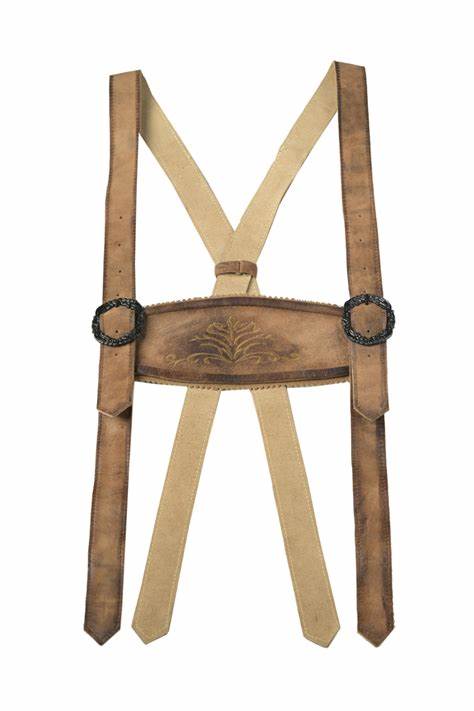
Lederhosen suspenders are thick leather straps that attach to Lederhosen with decorative metal or embroidered front panels. Made from cowhide or suede, they provide support and enhance the traditional Alpine look. Embroidered with Bavarian motifs, they are worn at folk festivals, beer halls, and cultural events, reinforcing German heritage.
Lapel Pins and Hat Pins with Alpine Motifs.
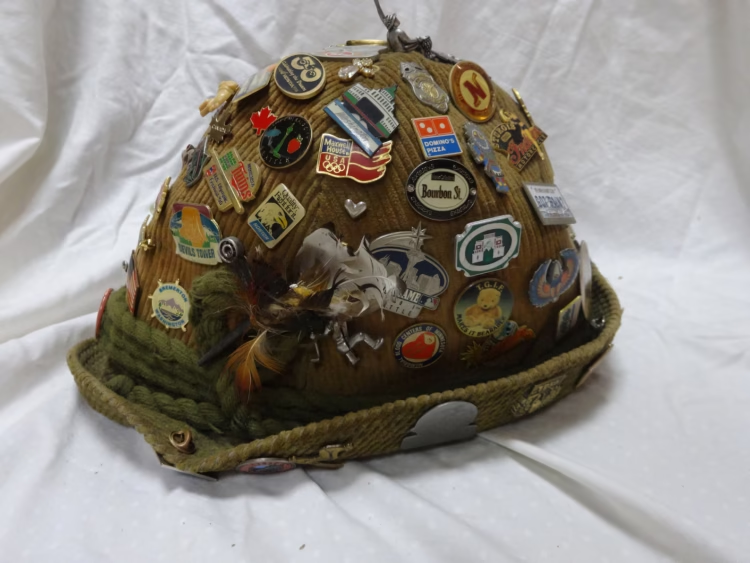
These decorative pins feature Alpine symbols like edelweiss flowers, stag heads, or hunting horns, crafted from metal, wood, or enamel. Attached to jackets, hats, or Tracht attire, they express regional pride and personal style. Popular at Oktoberfest and cultural gatherings, they blend tradition with personal expression.
Jewelry from Germany:
Here are detailed descriptions of each German fashion accessory:
Charivari (Bavarian Pocket Chain)
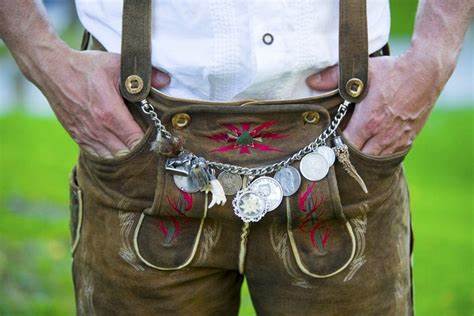
A Charivari is a traditional Bavarian decorative chain, typically crafted from solid silver or silver-plated metal, adorned with various charms such as gemstones, coins, medals, animal teeth, or small hunting trophies. Originally worn by men on the front of their Lederhosen as a talisman for successful hunts, it has evolved into a cherished heirloom passed down through generations. Women also wear finer versions with delicate chains and charms.
Edelweiss Jewelry
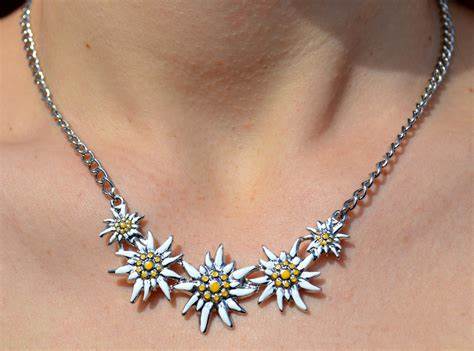
Edelweiss jewelry features designs inspired by the Edelweiss flower, a symbol of the Alpine regions. Common materials include sterling silver, gold, and enamel, crafted into pieces like necklaces, earrings, and brooches. The Edelweiss motif represents purity and rugged beauty, making these accessories popular among those wishing to express Alpine heritage or admiration for nature. Such jewelry is often worn during Oktoberfest or as a sentimental keepsake.
Hunting-Themed Brooches
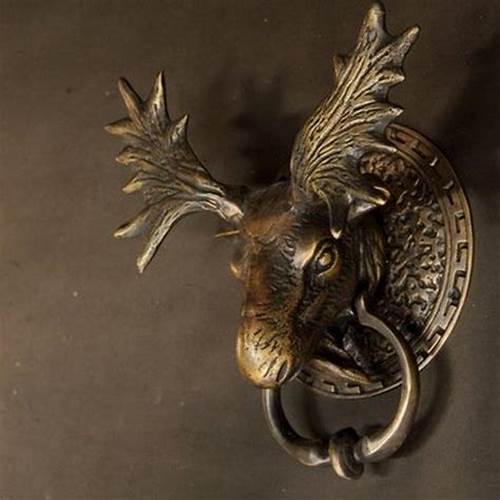
Hunting-themed brooches are decorative pins featuring motifs related to hunting, such as stag heads, hunting horns, or foxes. Crafted from metals like silver or bronze, and sometimes adorned with enamel or gemstones, these brooches are traditionally worn on jackets or hats as symbols of hunting prowess and affinity with nature. They remain popular in regions with strong hunting traditions and are often seen during cultural festivals.
German Amber Jewelry:
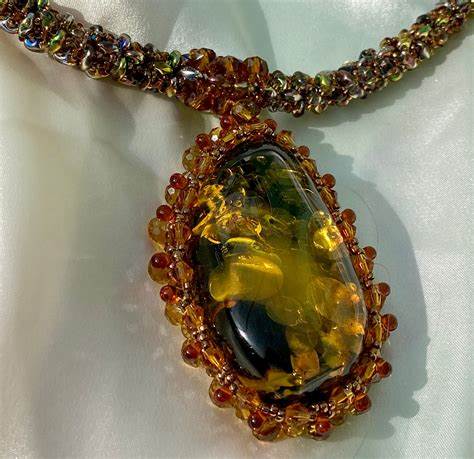
German amber jewelry showcases amber, fossilized tree resin found predominantly in the Baltic region. Artisans craft pieces like necklaces, bracelets, and earrings, often setting amber in silver or gold. The warm hues of amber range from golden yellow to deep brown, and the jewelry is valued for its natural beauty and supposed healing properties. It remains a popular souvenir and fashion statement in Germany.
Minimalist Bauhaus Jewelry
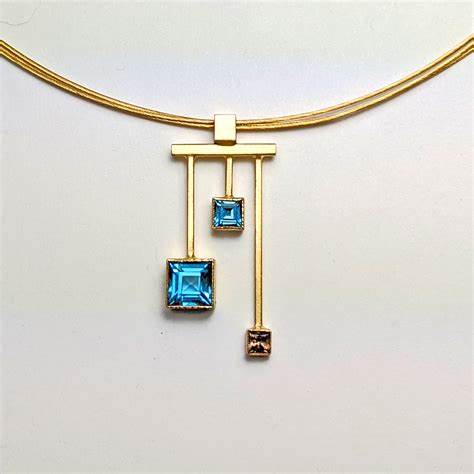
Influenced by the Bauhaus movement, minimalist Bauhaus jewelry emphasizes geometric shapes, clean lines, and functional design. Materials like silver, gold, and steel are commonly used to create understated yet elegant pieces such as rings, bracelets, and earrings. This style reflects the Bauhaus philosophy of uniting art and craftsmanship, appealing to those who appreciate simplicity and modern design.
Cuckoo Clock Pendants
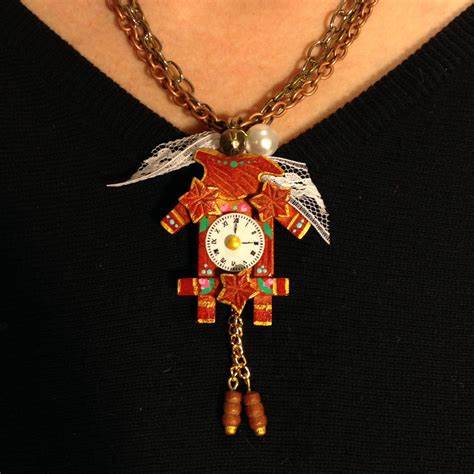
Cuckoo clock pendants are charming necklaces featuring miniature replicas of traditional Black Forest cuckoo clocks. Crafted from materials like wood or metal, these pendants often include intricate details such as tiny birds, weights, and decorative carvings. They serve as whimsical accessories that celebrate German craftsmanship and are popular souvenirs or gifts, especially during Oktoberfest.
Beer Stein Charm Necklace.
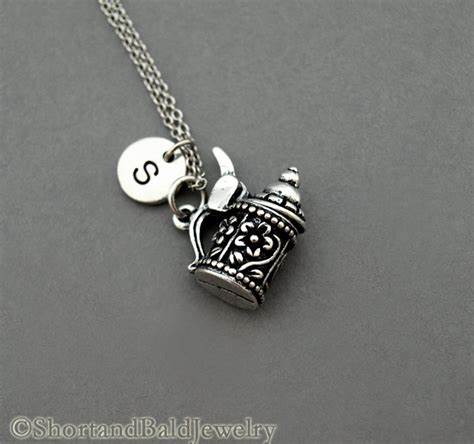
A beer stein charm necklace features miniature replicas of traditional German beer steins as pendants or charms. Made from materials like silver, gold, or enamel, these necklaces celebrate Germany’s rich beer culture. Often worn during beer festivals like Oktoberfest, they add a playful and festive touch to an outfit, appealing to beer enthusiasts and those celebrating German heritage.
